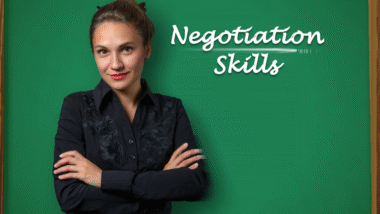Why Creating Rapport is So Important
Establishing rapport is the foundational first step in any Seller Negotiation.
This step is crucial because it transforms the seller’s perception of the investor and lays the necessary groundwork for a successful, high-quality business transaction.
In its simplest form, rapport is defined as a connection of friendship between two or more people. The explicit goal of Establishing Rapport is to make friends with the seller.
The Importance of Building Know, Like, and Trust
Rapport is vital because it fulfills the core premise of successful advisory relationships: “All things being equal, people will do business with, and refer business to, those Advisors they know, like and trust”.
Achieving this level of trust and personal connection is critical for several reasons:
• Relationship Building: Techniques such as using “feel-good” questions are the first step toward achieving the goal of being known, liked, and trusted.
• Professional Acceptance: Rapport is also one of the four foundational pillars of Neuro-Linguistic Programming (NLP), described as the capacity to connect quickly with others to build trust. When an advisor builds rapport, the client feels understood, which makes the advisor’s interventions more acceptable later in the process.
• Service Mentality: Relationship building and client service are essential components of soft skills, which are required for success in advisory training.
Paving the Way for Examination and Diagnosis
Creating rapport enables the investor to successfully transition into the problem-solving methodology of “Being The Doctor”:
• Avoiding Rejection: If an investor fails to take time to understand the seller (which begins with rapport and examination), the seller will likely decide to never do business with that investor.
• Guest Perception: By using strategic language, such as saying, “Thanks for inviting me over to show me your property,” the seller is encouraged to see the investor not just as a buyer, but as a guest.
• Opening Communication: Rapport facilitates the transition into the deeper questions required during the examination phase. This sets the stage for the seller to volunteer their problems themselves when the investor moves to Step 3 (Uncovering Motivation).
The FORM Approach: The Tool for Rapport
The actual process of building rapport relies on the “FORM” approach, a powerful and simple formula used during the property walkthrough. This is the practical way the investor achieves the goal of making a friend.
• F: Friends and Family: Asking about family, origin, and children is used to build as many bridges between what you have in common as possible.
• O: Occupation: Asking about the seller’s work, what they do, and how they started provides another level for the investor to draw the seller out and make connections.
• R: Recreation: Asking what the seller likes to do for fun and paying attention to photographs and knickknacks in the house allows the investor to tap into the seller’s passions.
• M: Message: The rapport phase concludes with the message, asking the seller: “Where’s a good place for us to sit down and talk this through?” The key is letting them choose where they feel most comfortable talking.
Critical Time Efficiency
While rapport is essential, it must be achieved efficiently.
The process of walking through the house and making a friend should ideally only take 5–10 minutes.
If it takes longer, the investor is investing too much of their time on a property you haven’t yet locked up.



